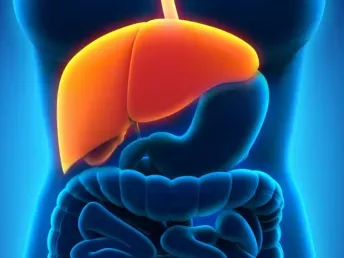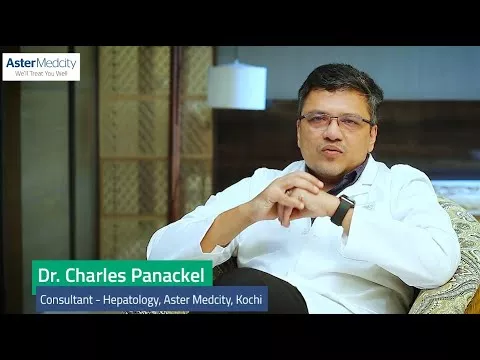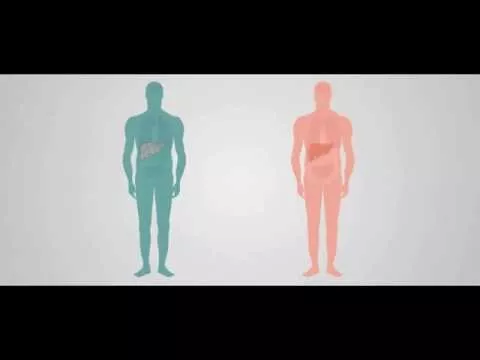What is Colonoscopy?
Colonoscopy is a medical procedure that involves the examination of the large intestine, also known as the colon, using a flexible tube with a camera and a light on its end. It is used to evaluate various conditions related to the colon, including colon cancer, polyps, ulcerative colitis, and Crohn's disease.
During the procedure, the patient is given sedation and the colonoscope is inserted through the rectum and advanced slowly through the colon. The camera on the end of the colonoscope transmits images of the colon to a monitor, which allows the doctor to inspect the lining of the colon for abnormalities.
If any abnormalities are detected, the doctor may take tissue samples, called biopsies, for further analysis. In some cases, polyps may be removed during the procedure. The entire colonoscopy usually takes about 30 to 60 minutes, and patients can usually return to their normal activities shortly afterward.
Why and when is Colonoscopy recommended?
Colonoscopy is recommended for various reasons, including:
Screening for colon cancer: Colonoscopy is one of the most effective screening tests for colon cancer. It is recommended for people who are at average risk for colon cancer to start screening at age 50 and then every 10 years, or more frequently depending on family history or other risk factors.
Investigation of symptoms: Colonoscopy may be recommended if a patient experiences symptoms such as abdominal pain, rectal bleeding, chronic constipation or diarrhea, or unexplained weight loss.
Monitoring of inflammatory bowel disease (IBD): Patients with ulcerative colitis or Crohn's disease may require periodic colonoscopies to monitor their condition and detect any changes or complications.
Follow-up after a previous diagnosis: If a patient has been diagnosed with colon polyps or colon cancer in the past, colonoscopy may be recommended to monitor for recurrence or to check for the presence of new abnormalities.
How is Colonoscopy different from other tests or treatments?
Colonoscopy is different from other tests and treatments for several reasons:
Direct visualization of the colon: Colonoscopy allows for direct visualization of the lining of the colon, which is not possible with other tests such as stool tests or CT scans.
Biopsy and polyp removal: During a colonoscopy, the doctor can take tissue samples, called biopsies, for further analysis, and can also remove polyps during the procedure. This allows for both diagnosis and treatment of colon abnormalities.
Comprehensive examination: Colonoscopy is a comprehensive examination of the colon and rectum, allowing for the detection of a wide range of abnormalities, such as tumors, inflammation, or bleeding.
Potential to prevent colon cancer: Colonoscopy has the potential to prevent colon cancer by detecting and removing polyps before they become cancerous.
Diagnostic and therapeutic: Colonoscopy is both a diagnostic and therapeutic tool, meaning it can be used for both diagnosis and treatment of colon abnormalities.
How is life after Colonoscopy?
For most people, life after a colonoscopy is generally very normal. Patients are usually able to resume their normal activities and diet shortly after the procedure, if there are no complications. However, some patients may experience minor side effects or changes in bowel habits, such as:
Abdominal discomfort: Some patients may experience mild abdominal cramping or discomfort for a few hours after the procedure.
Changes in bowel movements: Patients may experience changes in bowel movements, such as looser stools or more frequent bowel movements, for a day or two after the procedure.
Bloating or gas: Some patients may experience bloating or increased gas after the procedure, which usually resolves on its own within a day or two.
Sedative effects: The sedative used during the procedure may cause some patients to feel drowsy or tired for several hours after the procedure. It is advisable not to drive your vehicle after the procedure.
In rare cases, complications such as bleeding, infection, or perforation of the colon may occur after a colonoscopy. Patients should contact their healthcare provider immediately if they experience severe abdominal pain, fever, or bleeding after the procedure.
Overall, most patients should be able to resume their normal activities and diet after a colonoscopy, and the benefits of the procedure in detecting and preventing colon cancer far outweigh any minor side effects or risks.
FAQs
At Aster Hospitals we provide the highest quality of care and a transformative experience for all your healthcare needs. With our network of multi-speciality hospitals, specialised doctors, and world-class technology, we bring global standards of medical care to our patients.
What causes liver cancer?
In some scenarios the cause of liver cancer is identified, for instance chronic hepatitis infection damages the DNA in the liver cells and cause liver cancer. Sometimes liver cancer occurs in patients with no underlying health conditions and it's not clear what causes it.
What are the diets to be followed after bariatric surgery?
Your dietitian will help you to follow an ideal dietary plan. Usually, the diet includes foods rich in protein, vitamins, minerals, also it is important to manage the fluid intake to keep hydrated.
Is the bariatric procedure safe?
Yes, it is relatively safe procedure with the help of cutting-edge modern technology and experienced medical team at Aster Medcity, Kochi
How liver cancer is diagnosed?
Liver cancer is diagnosed by performing following tests and procedures; It is not possible to diagnose hepatic cancer by doing normal blood tests. A specific blood test is done to find levels of alfa-fetoprotein in serum (AFP). Increased levels of AFP indicate presence of liver cancer. Sometimes the doctor may suggest imaging studies such as a CT or MRI scan. Liver biopsy is another method used to identify malignant or benign tumour. It is done is by removing tissue from liver and examining under the microscope, liver biopsy can be done along with CT scan. Another method to identify liver cancer is by doing laparoscopy, in this procedure the surgeon assesses the signs of hepatocellular carcinoma by inserting a flexible tube with a camera and light at the tip (laparoscope) by making a small incision in the abdomen.
What are the main risk factors affecting liver cancer Treatment?
There are many factors which affects the liver cancer treatment which includes Certain liver conditions: - Non-alcoholic fatty liver - Liver cirrhosis developed due to Chronic hepatitis B virus (HBV) or hepatitis C virus (HCV) infection. Diabetes: Poorly managed type 2 diabetes can make fatty liver and could make the liver cancer worse.
What are the symptoms of liver cancer?
Most of the time the Signs and symptoms of liver cancer do not show up until the later stages, but sometimes the signs and symptoms may show up in the beginning stage. Listed below are the common symptoms of liver cancer of hepatic cancer: You may notice unplanned Weight loss, lack of appetite, nausea or vomiting and a feeling of fullness after having a small meal. Enlarged liver & spleen, pain in the right shoulder blade, abdominal pain and swelling Itching and Yellowing of the skin and eyes (jaundice) People with hepatic cancer may experience fever, enlarged veins on the belly that can be seen through the skin, and abnormal bruising or bleeding. Some signs and symptoms of hepatic cancer include increased blood calcium levels (hypercalcemia), Low blood sugar levels (hypoglycaemia) and high cholesterol levels
What are the treatments available for obesity?
The aim of the obesity treatment is to maintain a healthy Body mass index (BMI) to prevent many other diseases associated with obesity. Following a healthy dietary pattern and regular physical activity helps in sustaining overall health.
Do Genetic reasons cause obesity?
Genetic predisposition is one of the reasons for obesity, it is a well-known and currently proven fact. Around 43% of the general population is susceptible to become obese due to genetic factors.
How obesity can be identified?
The ideal way to measure obesity is by calculating Body mass index (BMI) of a person. BMI is defined as a person's weight in kilograms divided by the square of his height in meters (kg/m2). Increased BMI shows high body fatness.
When would I be able to return to work after bariatric surgery?
Usually, it may take up to one to two weeks to return to work, depending on the type of procedure that you undergo.
Are there any side effects of undergoing bariatric surgery?
The side effects of bariatric surgery are relatively lesser compared to the health issues that you suffer from obesity. Some side effects may include general weakness, malnutrition, temporary hair loss. You can overcome these issues by following the guidelines from dietitians and doctors.
How liver cancer is treated?
Treatment of liver cancer depends upon various factors, it includes the extent of the liver cancer, patients age, health conditions and personal preferences. Surgery: In liver surgery, the liver cancer cells and small portion of healthy liver tissue is removed to promote liver health. Liver transplant surgery: In liver transplant surgery the diseased liver of patient is replaced by whole or partial healthy liver from another person. Heating cancer cells. This is a minimally invasive procedure; the cancerous cells are ablated by using heat generated from medium frequency electric current. Freezing cancer cells: liquid nitrogen is used to freeze the cancer cells with the help of a surgical instrument (cryoprobe) Alcohol injection: In this method alcohol is directly injected to the tumour to treat liver cancer. Injecting Chemotherapy drugs: Injecting chemotherapy drugs directly to the liver is known as chemoembolization, it can be done as stand-alone treatment or in combination with ablation or surgery.
What are the prevention methods for liver cancer?
When it comes to prevention of liver cancer, it is really important to maintain a healthy lifestyle by doing regular exercise and following a balanced diet. Also, avoid hepatitis infection and exposure to cancer-causing substances such as aflatoxins, a toxin found on agricultural crops such as maize.
What is Obesity?
Obesity is a complex disease characterized by abnormal or excessive accumulation of fat in body that may impair health. People who have obesity are prone to develop heart disease, diabetes, high blood pressure and cancer.
What are the types of liver cancer (Hepatocellular carcinoma)?
There are mainly five types of liver cancer based upon the type of cell in the liver. Hepatocellular carcinoma (HCC) Hepatocellular carcinoma (HCC) is a common type of primary liver cancer which affects the main liver cells called hepatocytes. People with cirrhosis and men are more prone to get Hepatocellular Carcinoma. Fibrolamellar carcinoma Fibrolamellar carcinoma is rare liver cancer, it comes as a subtype of Hepatocellular carcinoma and usually seen in healthy teens and adults under 40 years old. Interestingly, people diagnosed as Fibrolamellar carcinoma is not usually associated with liver cirrhosis or Hepatitis B or C infection. Cholangiocarcinoma (bile duct cancer) Cholangiocarcinoma is a rare liver cancer of the bile ducts, also categorized under primary liver cancer. The carcinoma begins in the section of ducts inside the liver is called intrahepatic cholangiocarcinoma. Angiosarcoma Angiosarcoma a type of rare liver cancer affects the blood vessels of the liver; it is commonly seen in the elderly population. Angiosarcoma is also known as soft tissue sarcoma or haemangiosarcoma. Hepatoblastoma: Hepatoblastoma is a kind of rare primary liver cancer that mainly affects children under 3 years old.
Is obesity curable?
Obesity is a progressive and relapsing chronic disease which can be either prevented or reduced by losing weight by following a healthy dietary pattern and regular regimen of exercise.
What are the causes of Obesity?
The primary cause of obesity is the energy imbalance between calories consumed and calories expended. Overweightness is commonly caused by over eating and sedentary lifestyle. For instance, if you consume high amounts of energy, particularly fat and sugars, but do not burn off the energy through exercise and physical activity, much of the surplus energy will be stored by the body as fat. Factors that can lead to obesity are, Increased intake of energy-dense foods that are high in fat and sugars Decrease in physical activity due to the increasingly sedentary nature of work Environmental and societal changes associated with development Lack of supportive policies in health, agriculture, environment, food processing and education Diseases – Hypothyroidism, Chronic stress, Insomnia & Hypersomnia Eating Disorders Smoking cessation Drugs
Blogs
The source of trustworthy health and medical information. Through this section, we provide research-based health information, and all that is happening in Aster Hospital.












